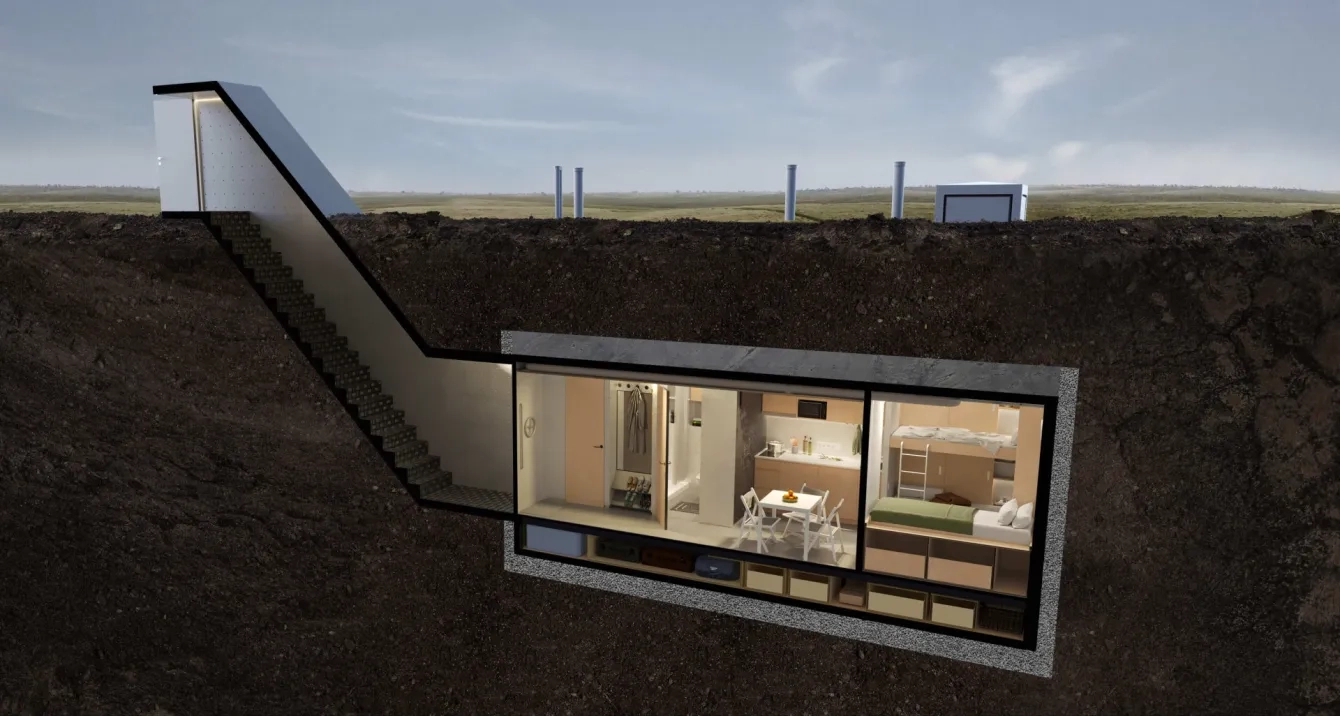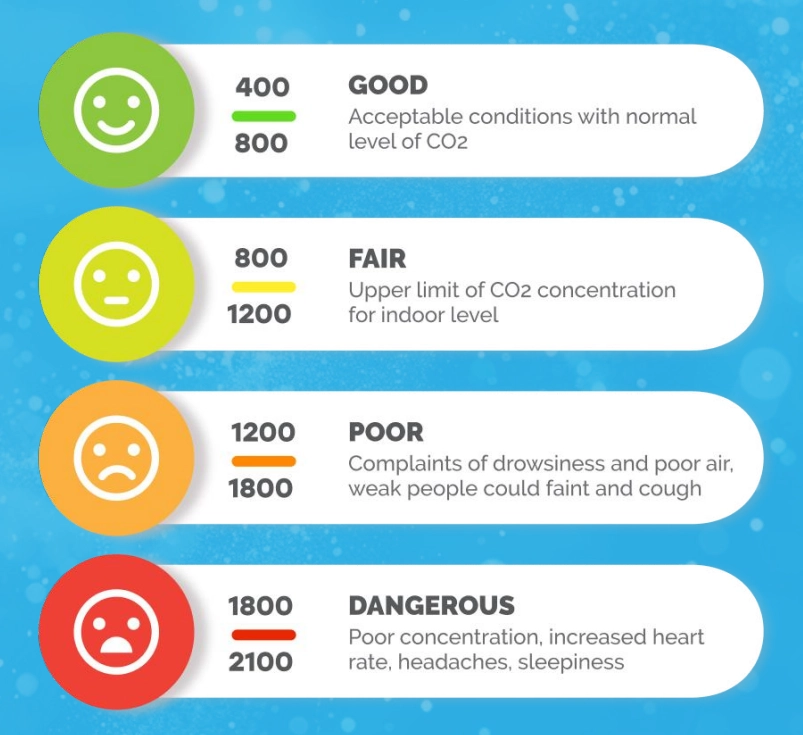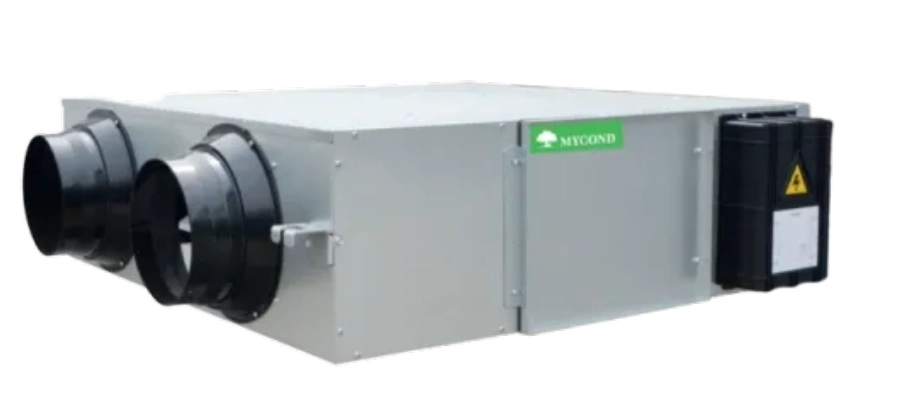
Ventilation issues in protective structures
Shelters and bunkers, regardless of their purpose - whether they are civil defense structures, military facilities, or underground storage facilities - face a critical problem: ensuring high-quality air exchange in a confined space. Without proper ventilation, these structures designed for long-term occupancy may not fulfill their protective function due to rapid deterioration in air quality.
Air is the number one resource in a storage facility
If we consider vital resources in conditions of prolonged stay in protective structures, fresh air ranks first in terms of criticality, ahead of even water and food. A person can survive without food for several weeks, without water for several days, but without enough oxygen for only a few minutes. In a confined space of a shelter, an average group of people can exhaust their oxygen supply and reach critical CO₂ concentrations in a few hours.
When planning for shelter supplies, managers often focus on food, water, medicine, and energy, sometimes overlooking the ventilation system. However, without proper air exchange, all other supplies can become useless - a person in an environment with high CO₂ concentrations and low oxygen content quickly loses efficiency, suffers cognitive decline, and ultimately faces a direct threat to life.

This infographic shows the levels of CO₂ (carbon dioxide) concentration in the air and their impact on humans:
- 400-800 ppm: OK Acceptable conditions with normal CO₂ levels
- 800-1200 ppm: SATISFACTORY Upper limit of CO₂ concentration for indoor environments
- 1200-1800 ppm: Poor Complaints of drowsiness and bad air, weak people may faint and cough
- 1800-2100 ppm: DANGEROUS Poor concentration, increased heart rate, headaches, drowsiness
Note: ppm (parts per million) - parts per million, a unit of measurement for the concentration of CO₂ in the air
That is why the supply and exhaust ventilation system should be considered as a critical infrastructure of the storage facility, which should be designed with the same care and reliability as water supply or power supply systems.
The main problems of the air environment in sealed facilities:
- Accumulation of carbon dioxide (CO₂) during prolonged human occupancy
- Reduced oxygen level in a confined space
- Increased humidity, which promotes the development of mold and fungi
- Accumulation of unpleasant odors and toxic substances
- Lack of filtration from external contaminants in case of emergency
- Stagnant air and overheating of premises in summer
- Risks of hypoxia and CO₂ poisoning during prolonged stay
Solving problems with air handling units

Air handling units (AHUs) are a comprehensive solution for ensuring a proper microclimate in storages and bunkers. Their implementation allows solving a number of critical issues:
Advantages of installing air handling units:
Continuous supply of fresh air
- Ensuring standard air exchange (at least 10 m³/h per person)
- Maintaining an optimal level of oxygen for a comfortable stay
Removal of contaminated air
- Effective removal of CO₂, moisture and other waste products
- Reducing the risk of developing respiratory diseases
Air filtration
- Protection against external contaminants (dust, allergens, radioactive particles)
- Possibility to install specialized filters (HEPA, carbon) for cleaning from chemical and biological threats
Humidity control
- Preventing condensation on walls and ceilings
- Protection of equipment and materials from corrosion and damage
Stabilization of temperature conditions
- Preventing overheating due to heat generated by people and equipment
- Ability to connect additional heating or cooling modules
Improvement of sanitary and hygienic conditions
- Reducing the risk of spreading infectious diseases
- Removal of unpleasant odors
Efficient use of energy
- Modern air handling units with heat recovery can save up to 75-85% of heat energy
- Reducing heating costs during the cold season
Autonomous operation
- Ability to operate from backup power sources
- Operating modes in different conditions (normal, emergency, stand-alone)
Main components of the air handling unit system for storage facilities and bunkers
A modern supply and exhaust system for protective structures consists of the following components:
- PVU base unit
1) Supply and exhaust fans
2) Heat exchanger (recuperator)
3) Automatic control system
4) Basic cleaning filters - Air duct system
1) Main air ducts
2) Distribution elements (diffusers, grilles)
3) Control valves and dampers
4) Silencers - Filtration equipment
1) Coarse filters (G4)
2) Fine filters (F7-F9)
3) Specialized filters (HEPA H13-H14)
4) Carbon filters for gas and chemical sorption - Sealed valves
1) Check valves to prevent backdrafts
2) Explosion-proof valves
3) Fire protection valves - Control and monitoring system
1) CO₂, oxygen, humidity, temperature sensors
2) Controllers and programmable modules
3) Warning and emergency shutdown systems
4) Remote control panels - Optional modules
1) Cooling/heating elements
2) Dehumidifiers/humidifiers
3) UV sterilizers
4) Power backup systems
Alternative solutions and substitutes
Alternative components may be used in situations where resources are limited or specific requirements are met:
Simplified ventilation systems
- Ducted fans instead of a complex air handling unit
- Separate supply and exhaust units without recovery
- Mechanical systems with manual control
Alternative filtration solutions
- Self-made carbon filters
- Filters using non-specialized materials (synthetic fabrics, cotton wool)
- Multilayer mechanical filters
Simplified air ducts
- Flexible air ducts instead of rigid metal ones
- Plastic pipes of appropriate diameter
- Improvised distribution elements
Autonomous solutions
- Portable generators to power the system
- Hand-held fans for emergency situations
- Chemical air purifiers (for short-term use)
Alternative control systems
- Autonomous sensors with battery power
- Simplified mechanical pressure and humidity indicators
- Timers instead of automatic controllers
Conclusion
Installing air handling units in warehouses and bunkers is not just a matter of comfort, but a critical necessity to ensure the safety and health of people during prolonged stays in confined spaces. Modern air handling units offer a comprehensive solution to ensure regulatory air exchange, filtration and air quality control.
When designing and installing such systems, it is important to take into account the specifics of a particular building, the number of people, the duration of autonomous operation and potential external threats. A properly selected and installed air handling unit system significantly increases the protective properties of bunkers and shelters, transforming them from a simple physical shelter into a full-fledged environment for a long-term safe stay of people.